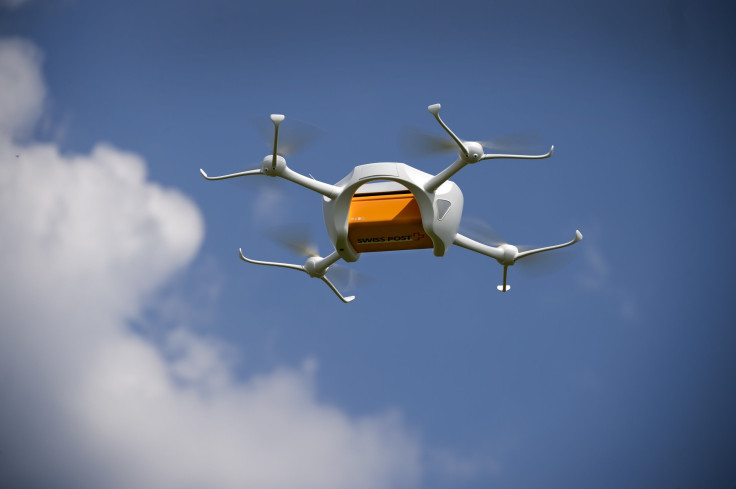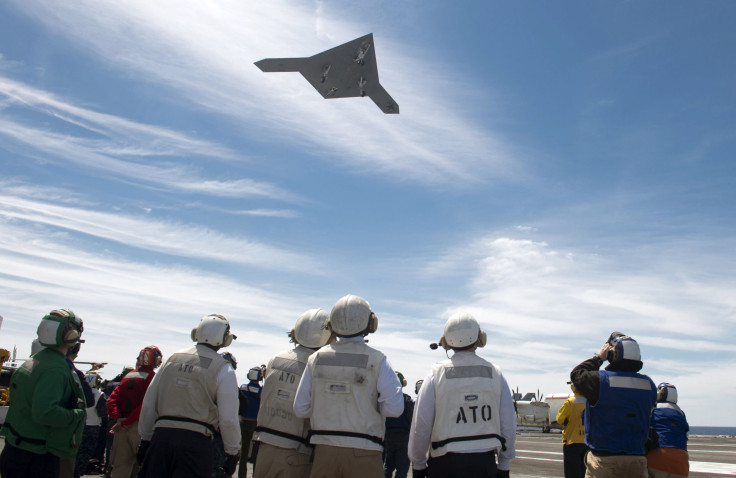The Drone Industry Is Still Waiting For FAA Rules; Frustration Grows After Missed UAS Deadlines In 2015

As the founder of the Drone Journalism Lab at the University of Nebraska-Lincoln, Matt Waite has spent untold hours researching how drones might one day be used as common newsgathering tools for media outlets. Unfortunately, much of his work these days is limited to what he can do from the ground, not because he doesn’t have the skills to pilot an unmanned aerial vehicle over the open skies of the northern Great Plains, but because doing so would require navigating a far more complex hurdle: permission from the Federal Aviation Administration.
Waite asked for that permission months ago, but he said he has heard nothing but “a gigantic silence” from the FAA. He has recently become resolved to the idea that he will have to arrange overseas field trips for him and his students.
“We’re in limbo,” a frustrated Waite told International Business Times. “Nebraska is a wonderfully wide-open space. It would be an ideal place to be testing these devices out and trying to learn about them before they become common. But right now we’re stuck.”
They’re not the only ones. From private companies like Amazon to local police departments and public research facilities, virtually every entity with an eye on drones has been waiting with bated breath for the FAA to come up with some kind of plan to safely integrate unmanned aerial vehicles, or drones, into the national airspace. In 2012, Congress mandated the agency to do just that with the FAA Modernization and Reform Act, but nearly four years later, drone stakeholders throughout the private and public sectors are still waiting. Many have simply given up hope.
“The whole drone industry is waiting for regulation,” said Mickey H. Osterreicher, general counsel for the National Press Photographers Association, a trade group for photojournalists. “Here’s an industry that’s begging for the regulations and can’t really get any, even though Congress mandated the FAA to do that.”
Private vs. Public
Much of the chatter around the issue has revolved around commercial — or private — drones, the kind Amazon says it wants to ultimately unleash in an effort to speed up the delivery process. The modernization act required the FAA to come up with a plan for integrating commercial drones into the national airspace by no later than Sept. 30, 2015. That deadline, of course, came and went, bringing a groundswell of criticism from pilots’ associations and drone manufacturers. In September, 29 organizations fired off a letter to FAA Administrator Michael P. Huerta, calling on the agency to pick up the pace.
But drones in the private sector are only half of the equation. Last Thursday, when much of the world was ringing in the new year, the FAA quietly missed another key deadline in the modernization act, this one concerning noncommercial — or public — drones. The lack of clear rules concerning drones in the public sector has implications not just for public universities and research organizations like the Drone Journalism Lab, but also law enforcement departments and even the U.S. military. “Public” drones are defined by the FAA as a form of public aircraft, which includes aircrafts owned by the armed forces.
Asked about the latest missed deadline for public drones, an FAA spokesman said the agency has “drafted guidance” that responds to the public drone mandate, but that the guidance is still under review. He declined to share any details of the plan or even a timeline.
“We can’t speculate when it will be published,” he said.
Last week’s missed deadline for public drones has gone largely unnoticed in the press, with many people who had been following the FAA modernization act saying it’s just par for the course at this point. “Is there a deadline the FAA hasn’t missed?" Waite asked.

One person who did notice is Barry Summers, a blogger and activist from Asheville, North Carolina, who writes a blog examining what he says is a plan to “open U.S. domestic airspace to military drones.” When Summers realized the deadline was approaching, he called the FAA to ask how the mandate was progressing. Section 334, the section in the act that deals with public drones, required the FAA to “develop and implement operational and certification requirements” for public drones by Dec. 31, 2015. But Summers said the FAA staffers he spoke with seemed unfamiliar with Section 334. At one point, he said, one staffer asked him if he could copy and paste the section and send it to them. “If I had been drinking milk, I would have blown it out my nose at that point,” Summers said in an email.
Exemption Fever
With no clear rules in place, private or public entities wishing to operate drones in the national airspace need to apply for special authorization. For commercial drones, the process is known as a Section 333 exemption, and as of January, the FAA has granted almost 3,000 of them for various purposes. (For instance, CNN won approval to use drones for aerial photography.) For public drones, organizations can request what’s known as a certificate of authorization, or COA. Such waivers have been granted to a number of universities, police departments and even NASA.
Back in Nebraska, Waite said the Drone Journalism Lab has not had much luck getting a public or private exemption to use drones. Although the University of Nebraska is a state university, the FAA determined in 2014 that “education is not a valid governmental function that supports the operation of an aircraft, whether manned or unmanned.” That leaves the lab’s research — studying drones as a newsgathering tool — in a gray area.
As a recourse, Waite said he filed for the commercial drone exemption, a process that required him to shell out about $7,000 for a pilot’s license. “I had to spend close to 40 hours in a Cessna 162 Skycatcher to get my pilot’s license so I can fly a 3-pound hunk of plastic on the ground,” he said.
In the meantime, he’s still waiting for an answer, along with just about everyone else. Drone stakeholders say the FAA’s sluggish pace is hurting the industry as the United States falls behind Europe and elsewhere, where integration efforts are progressing more rapidly. While no one expects U.S. regulators to wave a magic wand and create a sky full of drones tomorrow, many say they would settle for a clear path forward from the FAA.
“It would be nice if they were able to at least stick to the deadlines that were mandated for them,” Osterreicher said.
Christopher Zara covers media and culture. News tips? Email me. Follow me on Twitter @christopherzara
© Copyright IBTimes 2024. All rights reserved.






















